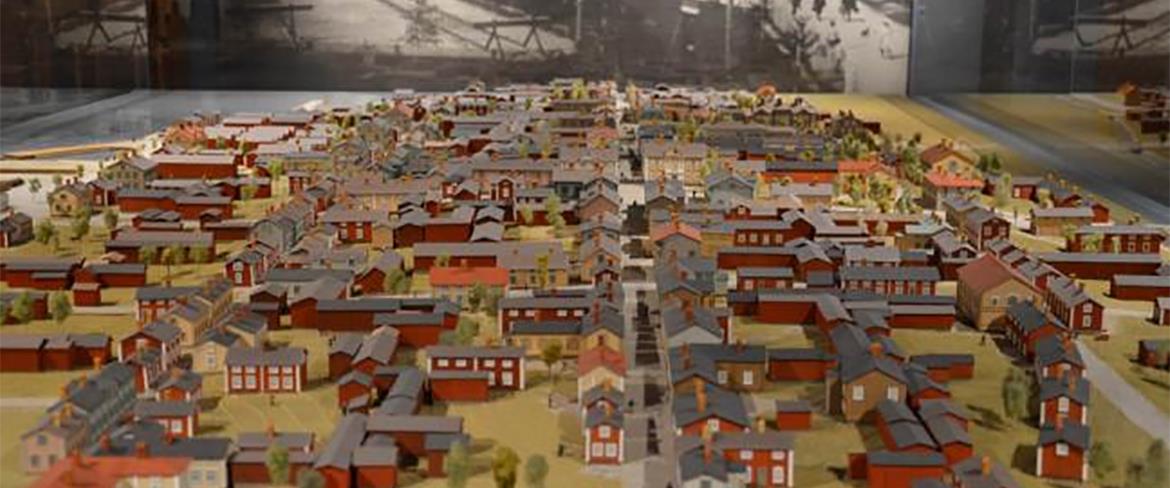Exhibition - Piteå in 1898
This exhibition shows the history of Piteå, from the first town in present Öjebyn until the turn of the 19th century. The model is a reconstruction of the buildings in the year of 1898, based on photos in the Museum archives and a city map, drawn in 1898.
The first church- and market place in the area was founded at Gamla Kyrkbyn, about 12 kilometres upstream, in the 1320’s. A new town was founded in the early 15th century in Öjebyn, about 6 kilometres upstream, because of a fire, and probably also because the land rise (about 1 cm per year) made it impossible to reach the harbour. The name Öjebyn means “The town on the island”. In 1621 the town was granted city privileges.
In 1666, Öjebyn was completely lost in a fire. Due to the land rise it was decided to build the new city further down the river. In 1667 the city was moved to the island of Häggholmen to ensure access for sailing ships and easy defence in case of war. The city plan was drawn in Stockholm by an unknown architect. The city square was built on the highest point of the island, as a quadrangle with the main streets intersecting in the middle, all in accordance with a continental fashion of the time.
In 1675 the Town Hall was built next to the city square and in 1686 the new church. The church, though, was built on the mainland, to the north of Häggholmen. In 1721, during the Great Northern War, Piteå was burnt down by the Russian army. The war put an end to the era of Sweden as a great power but Piteå was eventually rebuilt.
The neighbourhood of Norrmalm was founded in 1781 on the northern mainland, close to the church. It was the home of craftsmen, fishermen and workers, while Häggholmen was the home of the town burghers.
In 1809, Piteå was once again invaded by the Russians. The town was looted and burned. The church, however, was used as the high quarters of the russian army and was thus saved. The last army battle in Sweden was at Pitsund, the 25th of August, 1809.
In 1810, after the loss of Finland to Russia, the province of Norrbotten was established. Between 1819 and 1865 Piteå was the residential town of the provincial governor. In 1838 the new Town Hall was erected, a monumental classicist building in timber. It was the third town hall to be built in the same place. Since 1980 it is the home of Piteå Museum.
During the 20th century Piteå had outgrown its early borders. Thanks to the lucrative fishing and sawmill era of 1860 to 1960 the city had flourished. Due to the land rise, Häggholmen no longer is an island. The sound separating the island from the mainland gradually grew narrower and in the early 1920’s it was filled up. In the 1960’s a street was constructed where the sound had been, named Sundsgatan, “Sound Street”. The harbour has been moved to Haraholmen, south of Piteå, but the city centre is still located in the same place – Häggholmen.
Accessibility
- accessible to wheelchair users
Opening hours
Tid
1/1/2024 - 1/31/2025
Facilities
- General facilities: conference facilities
- Museums, Galleries and crafts: exhibition programme, museum, museum shop, permanent exhibitions

